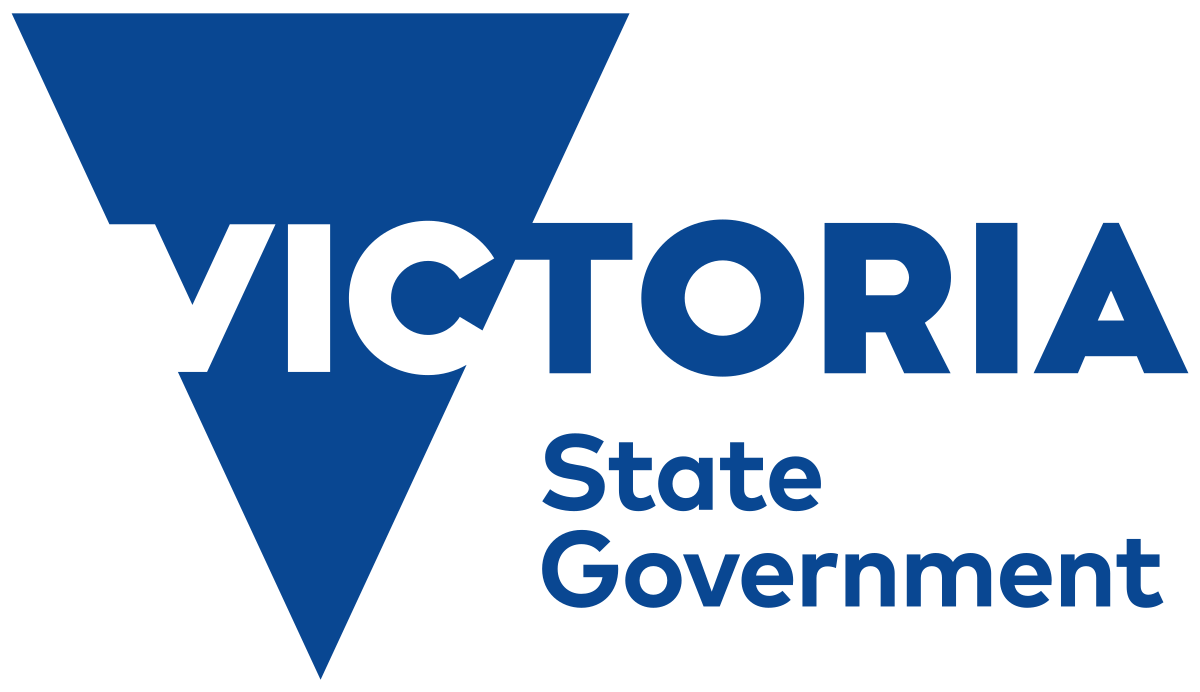Estuary management
Where are the estuaries?
There are eight major estuaries in the Glenelg Hopkins region: The Hopkins, Merri, Moyne, Yambuk, Fitzroy, Surry and Glenelg estuary and Fawthrop Lagoon.
Most of these estuaries close from time to time following the formation of a sand bar at the estuary mouth. This is a natural opening and closing process.
How do you manage an estuary?
The bar can be opened naturally (by increasing pressure as water level rises or by wave action) or artificially (mechanically e.g. shovel or excavator).
The preference for management of an estuary mouth closure is always to let nature take its course but inflows to estuaries and monitoring of water levels is a constant in the waterway manager’s role.
Listen to how we manage an estuary
ESTUARY PROCESSES: How fresh and salt water layers interact
Fresh and salt water layers (Stratification)
Many of the processes that occur in estuaries are related to inflows, both tidal and riverine. This includes stratification of water in the estuary, which occurs due to the higher salt content of seawater, which makes it denser than freshwater. This difference in density means that when seawater enters estuaries it flows in along the bottom and wedges underneath the freshwater. This creates layers of different water quality, with very little mixing in between.
This stratification occurs during periods of low flow, particularly during summer and early autumn. Estuaries in which this stratification of water occurs are commonly known as salt wedge type estuaries.
As there is very little mixing between the two layers, once freshwater flows have decreased and the mouth is closed, oxygen in the bottom saltwater layer can be used up over time.
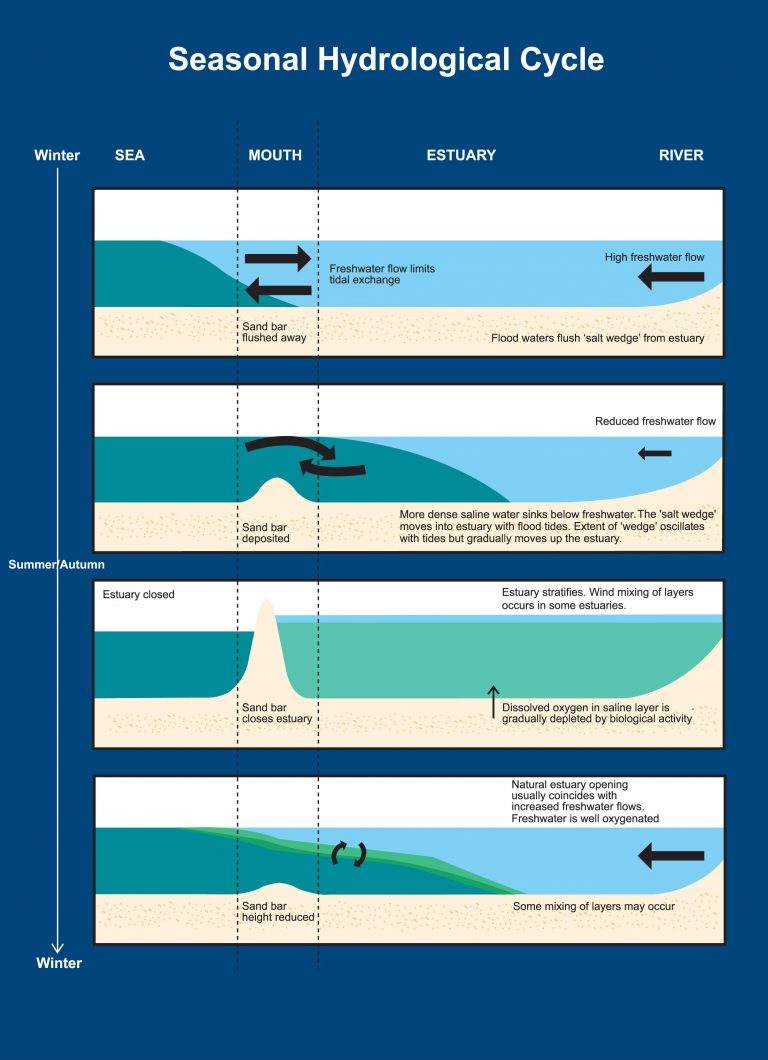
Over time these bottom waters can become deoxygenated, which means that more oxygen is being used up than can be replaced. The process of aerobic decomposition of organic matter uses oxygen. If there is no oxygen present then decomposition becomes anaerobic, which means that it is done without oxygen. This leads to the production of hydrogen sulphide, which is commonly known as rotten egg gas due to its smell.
Oxygen can be replaced in water through photosynthesis of aquatic plants; direct diffusion from the atmosphere; turbulent aeration and through tidal and freshwater inflows.
ESTUARY PROCESSES: How water moves in an estuary
Flow and water movement
Freshwater inflow plays an important role in the movement of the salt wedge; the duration of stratification and the process of seasonal closure of the estuary entrance.
Inundation of surrounding low-lying land is also an important natural process in estuaries. High winter flows within the estuary are essential for effective flushing of the system and maintenance of the environmental, social and economic values of the estuary.
Flushing acts as a “reset” button for water quality conditions within the estuary. This is essential as a major spawning cue of recreationally important fish species such as black bream and may also be important in the life cycles of many other estuarine species.
The amount of freshwater inflow into estuaries is linked to rainfall, extraction and land use.
The volume of water that is held within the estuary varies depending on water level height. Understanding how much water is held in the estuary at a given time is important as it gives some indication of how much flow is needed to replace the water in the estuary – of key importance if water quality is a concern.
ESTUARY PROCESSES: Natural closures
Entrance mouth closure
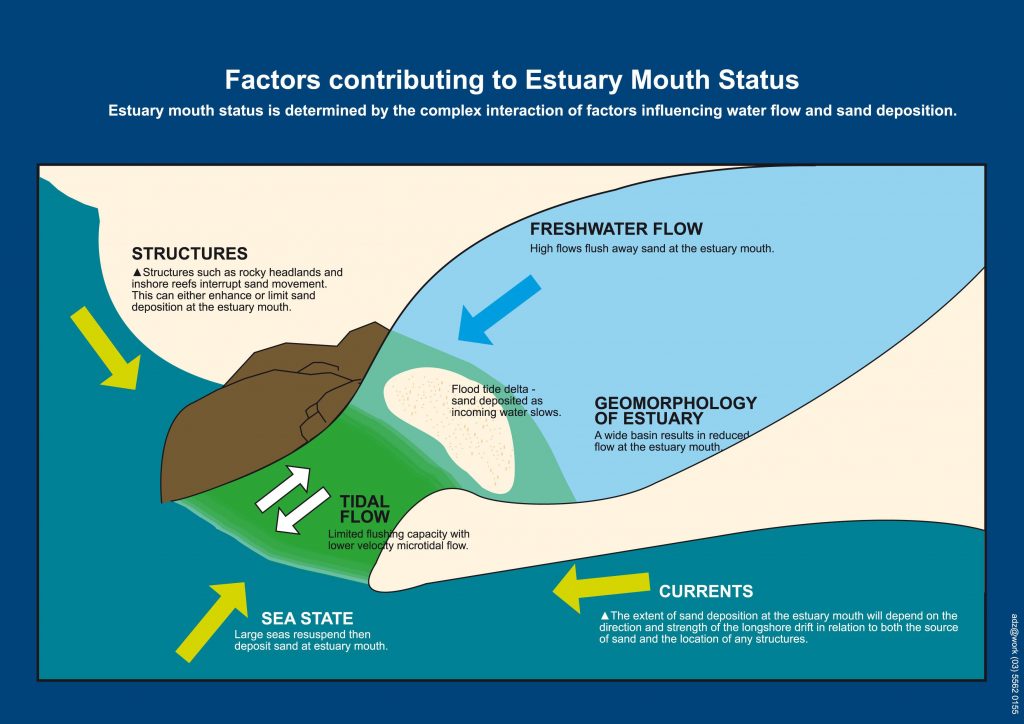
Many south west Victorian estuaries lie behind a series of dunes and limestone rocks with a narrow opening to the sea.
Closing or ‘blocking’ of the estuary mouth is a natural process, and occurs in estuaries throughout southern New South Wales, Victoria and Western Australia.
Sand builds up at the estuary mouth during low flow and forms a barrier (or bar). This causes water levels in the estuary to rise and often floods adjacent land as fresh water flows into the estuary or when seawater spills over the bar.
The bar can be opened naturally (by increasing pressure as water level rises or by wave action) or artificially (mechanically e.g. shovel or excavator).
The process of an estuary closing is a natural one, and the preference for management of an estuary mouth closure is always to let nature take its course. In due time flow from the the river and sea conditions will open the waterway once more.
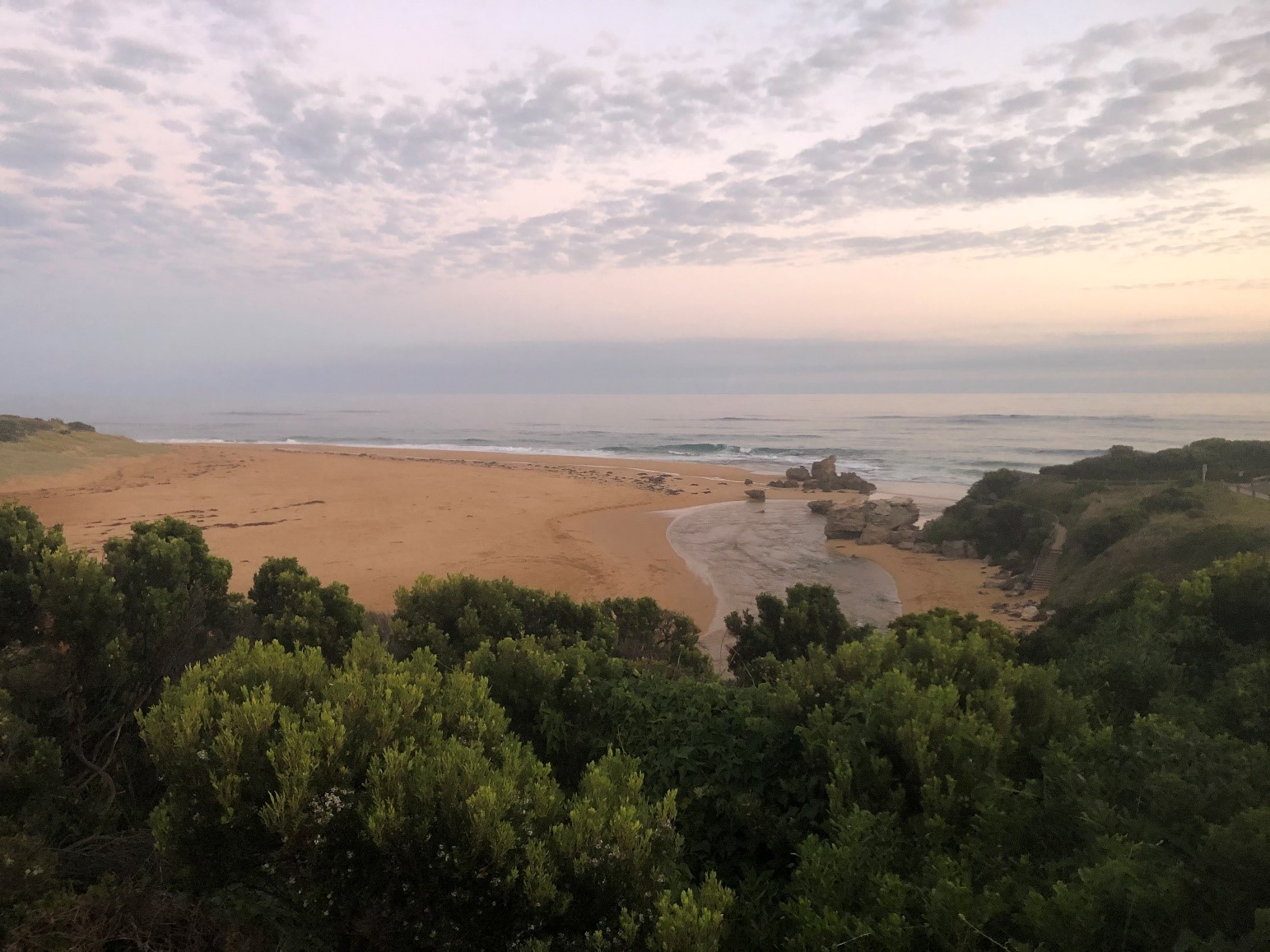
However, as towns and infrastructure have developed around waterways, sometimes an estuary closure has negative impacts socially and economically.
It is at this point where the Glenelg Hopkins CMA uses the Estuary Entrance Management Support System to make a decision on whether an artificial opening is appropriate.
Artificially opening an estuary at the wrong time can have devastating consequences for aquatic animals living in the estuary and can result in mass fish deaths. The Estuary Entrance Management Support System (EEMSS) informs these decisions and minimise risk and takes into account a range of factors, including the impact on local residents, townships, infrastructure, and tourism.
ESTUARY PROCESSES: Artificial openings
Artificial River Mouth Openings
Most estuaries in the Glenelg Hopkins region seasonally close. When this occurs the resultant increase in water level has significant environmental benefits including flooding adjoining wetlands and fringing vegetation.
There are also economic costs associated with flooding of highly productive agricultural land and infrastructure such as jetties and roads. Therefore, the decision to artificially open the estuary to relieve flooding requires consideration of a range of environmental values. There are a number of potential consequences of artificially opening estuaries at inappropriate times, including fish deaths and the flushing of fish eggs and larvae out to sea.
Glenelg Hopkins CMA uses the Estuary Entrance Management Support System (EEMSS) to consider the risks of artificially opening estuary mouths at different water levels and times of the year, and possible impacts on infrastructure and natural assets.

Getting involved – Estuary Watch
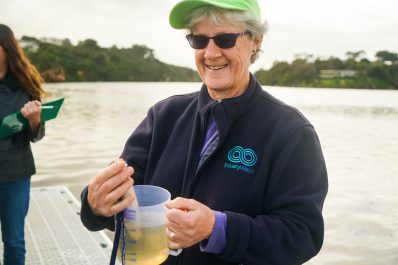
You can get involved with citizen science programs and projects through the Estuary Watch Program. This volunteer program helps us as waterway managers understand what is going on.
Find out more about Estuary Watch


